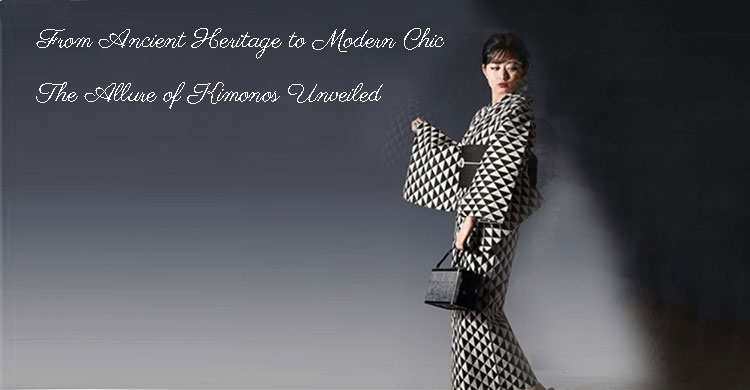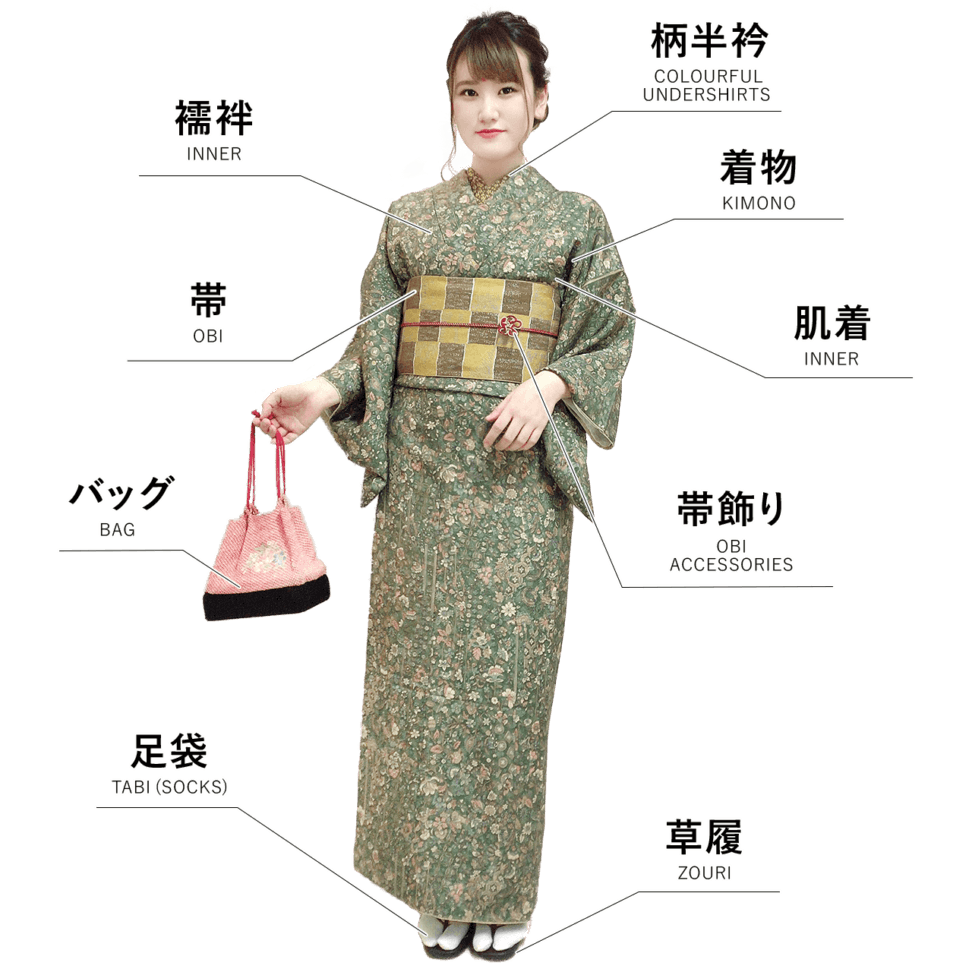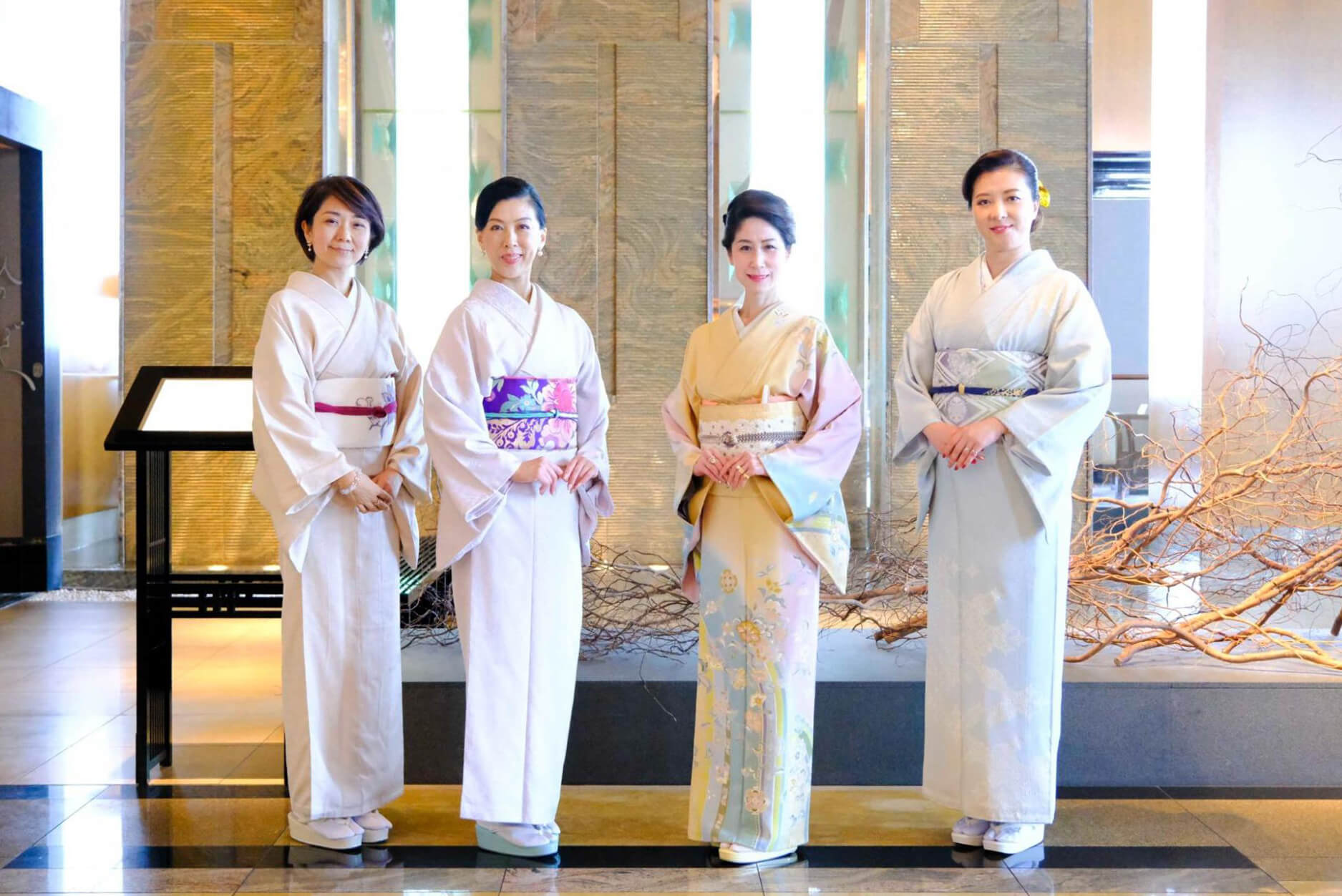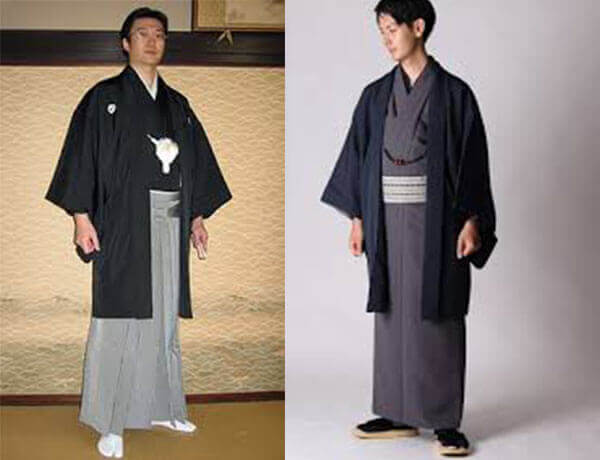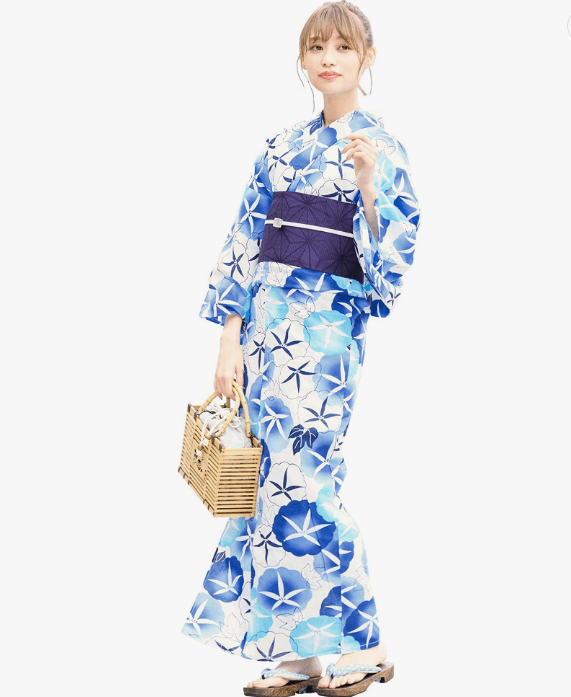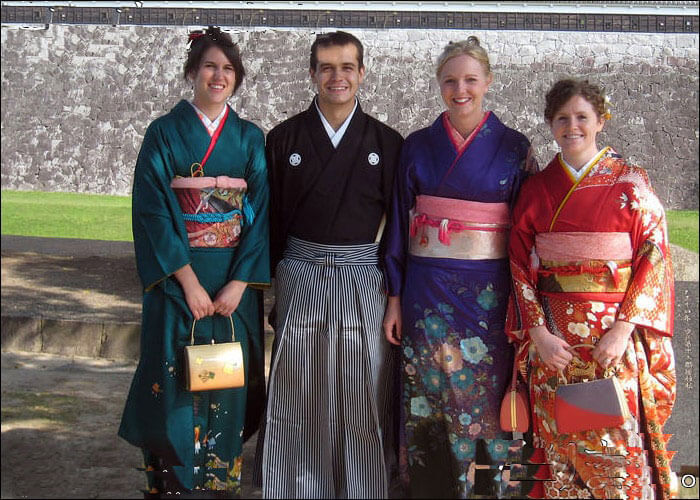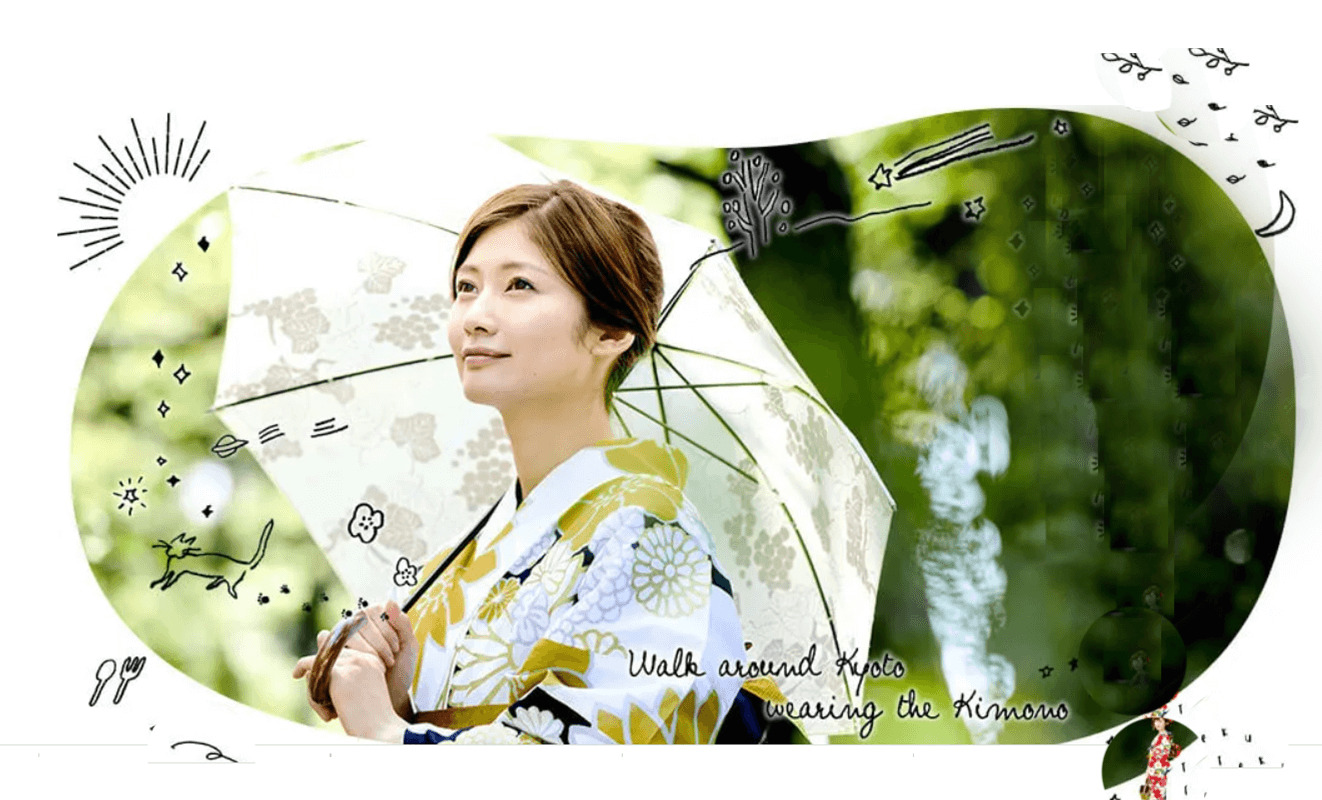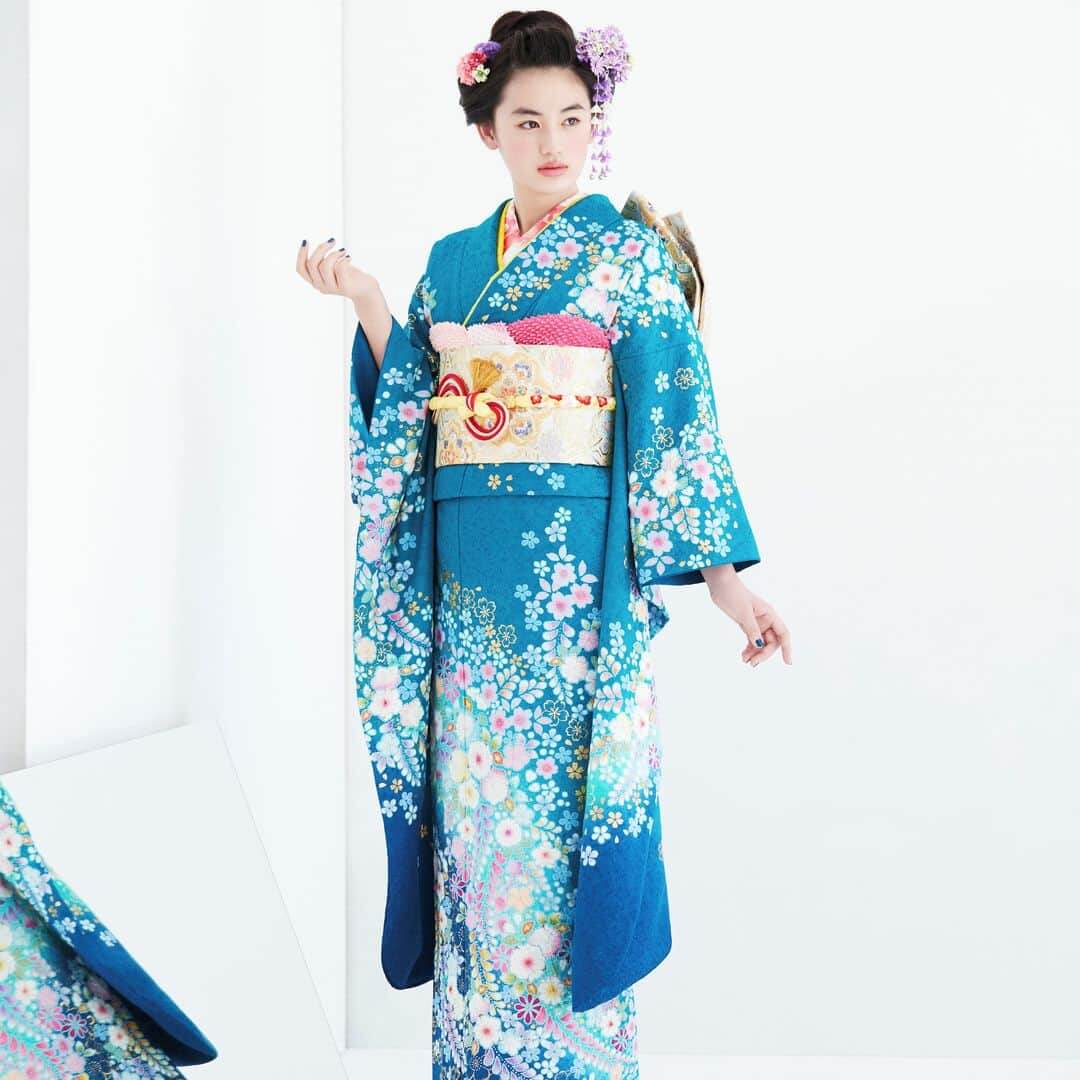You would be surprised to see people, especially ladies hardly wearing Kimono (Japanese traditional dress) no matter where you go in Japan today, whereas we had seen almost all women wearing Kimono around just over 50 years ago.
Then what’s Kimono (traditional dress)?
Hello everyone how are you doing? Today’s topic is “Kimono” which we say “Wafuku” too、 besides Kimono.
And there is the term of “Wafuku” against “Youfuku” (Western-style clothing), the Kimono has been a traditional Japanese garment since ancient times, including “Cool Japan”.
Nowadays, however, kimono is worn mainly for important festivals or formal such occasions as New Year,the Shichi-go-san festival, Coming-of-Age Day, graduations, weddings, and funerals.
It is a formal style of clothing associated with politeness and good manners.
This is a recent new trend, however, that a woman wearing it is very sometimes refered to as “Yamato Nadeshiko”, please be understood that what I mean is the impresssion from the image but it doesn’t totally imply “Nadeshiko of Japanese female soccer players”, but in a way the basic meaning behind it is the same.
Then, what’s Yamato Nadeshiko?
Yamato Nadeshiko is a Japanese word meaning the “personification of an idealized Japanese woman”, or “the epitome of pure, feminine beauty”; poised, decorous, kind, gentle, graceful, humble, patient, virtuous, respectful, benevolent, honest, charitable, pious, faithful and so on, anyway the highest eulogies.
It is a floral metaphor, combining the words Yamato, an ancient name for Japan, and Nadeshiko, a delicate frilled pink carnation called Dianthus superbus, whose kanji translate into English as “caressable/adorable child”.
The term “Yamato Nadeshiko” is often used referring to a girl or shy, demure young woman and, in a contemporary context, nostalgically of women with good traits which are perceived as being increasingly rare.
However, Nadeshiko Japan is also widely used as the name for the Japanese national women’s football team.
It has T-shaped, straight-lined robes worn so that the hem falls to the ankle, with attached collars and long, wide sleeves.
It is wrapped around the body, always with the left side over the right (except when dressing the dead for burial) and are secured by a sash called an obi, which is tied at the back.
It is generally worn with traditional footwear (especially zōri or geta) and split-toe socks (tabi).
Today, it is most often worn by women, particularly on special occasions. Traditionally, unmarried women wore a style of kimono called furisode, with almost floor-length sleeves, on special occasions.
A few older women and even fewer men still wear it on a daily basis. Men wear it most often at weddings, tea ceremonies, and other very special or very formal occasions.
Professional sumo wrestlers are often seen in the kimono because they are required to wear traditional Japanese dress whenever appearing in public.
What’s “Yukata”?
“Yukata” refers to a traditional Japanese garment that is typically worn during the summer or at festivals.
It is a type of kimono that is made from lightweight cotton or synthetic fabric and is often decorated with vibrant patterns.
In English, “yukata” is commonly used to refer to this specific type of kimono.
If you wish to try your favorite one, here are the list of it Rental shops in Tokyo.
★ Kimono Tokyo Harajuku 03-6804-1762
For further information, click below image please
★ 着物レンタルあき渋谷本店 (Kimono Rental Aki Shibuya) 03-3476-3341
★ 着物レンタルあき銀座店(Kimono Rental Aki Ginza) 03-5568-0529
Please click here for Further information on Kimono Rental Aki Ginza
★ 着物レンタル浅草愛和服 2号店 (Kimono Rental Asakusa No.2) 03-6231-7554
Besides above-mentioned Rental Shops, we have so many shops available in not only Tokyo, but also Kyoto and other places.
Finally, Please try wearing traditional Japanese clothing, such as a kimono, at least once and experience the taste of Japan through it.!

